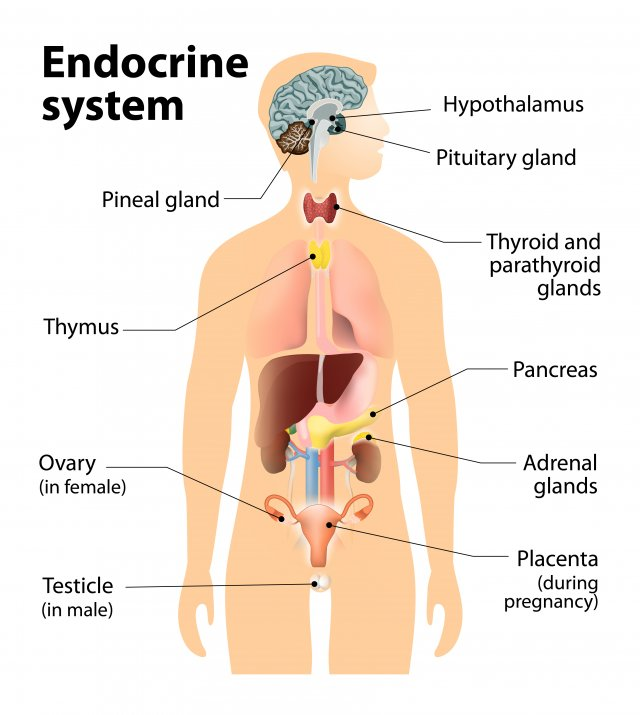
Overview of Endocrinology (Physiology)
Session summary The term hormone is derived from the Greek word Hormon meaning ""that which sets in motion." Hormones have the amazing ability to excite us, instill fear as well as perform a diverse range of essential biological functions through chemical signalling. In this introductory session to Endocrinology, we'll explore the endocrine system covering the major hormone secreting endocrine glands, the classification of hormones and the different types of chemical signalling. We'll also take a brief look at some examples of disorders of endocrine signalling. Learning outcomes Describe the anatomical location and the hormone secretions of major endocrine organs Distinguish between endocrine, neuroendocrine, paracrine, autocrine and intracrine mechanisms of chemical signalling Define four major classes of hormone Define a neurosecretory cell and its importance in integrating neural and endocrine function Name the peripheral endocrine glands controlled by HPA
-
What are the major endocrine organs in the body? (7)
♥︎Hypothalamus
♥︎Pituitary gland
♥︎Thyroid
♥︎Adrenal cortex
♥︎Gonads
♥︎Pancreas
♥︎Parathyroid glands
-
Which organ secretes releasing and inhibiting hormones? (1)
Hypothalamus
-
What are the secretions of the anterior and posterior lobes of the pituitary gland? (2)
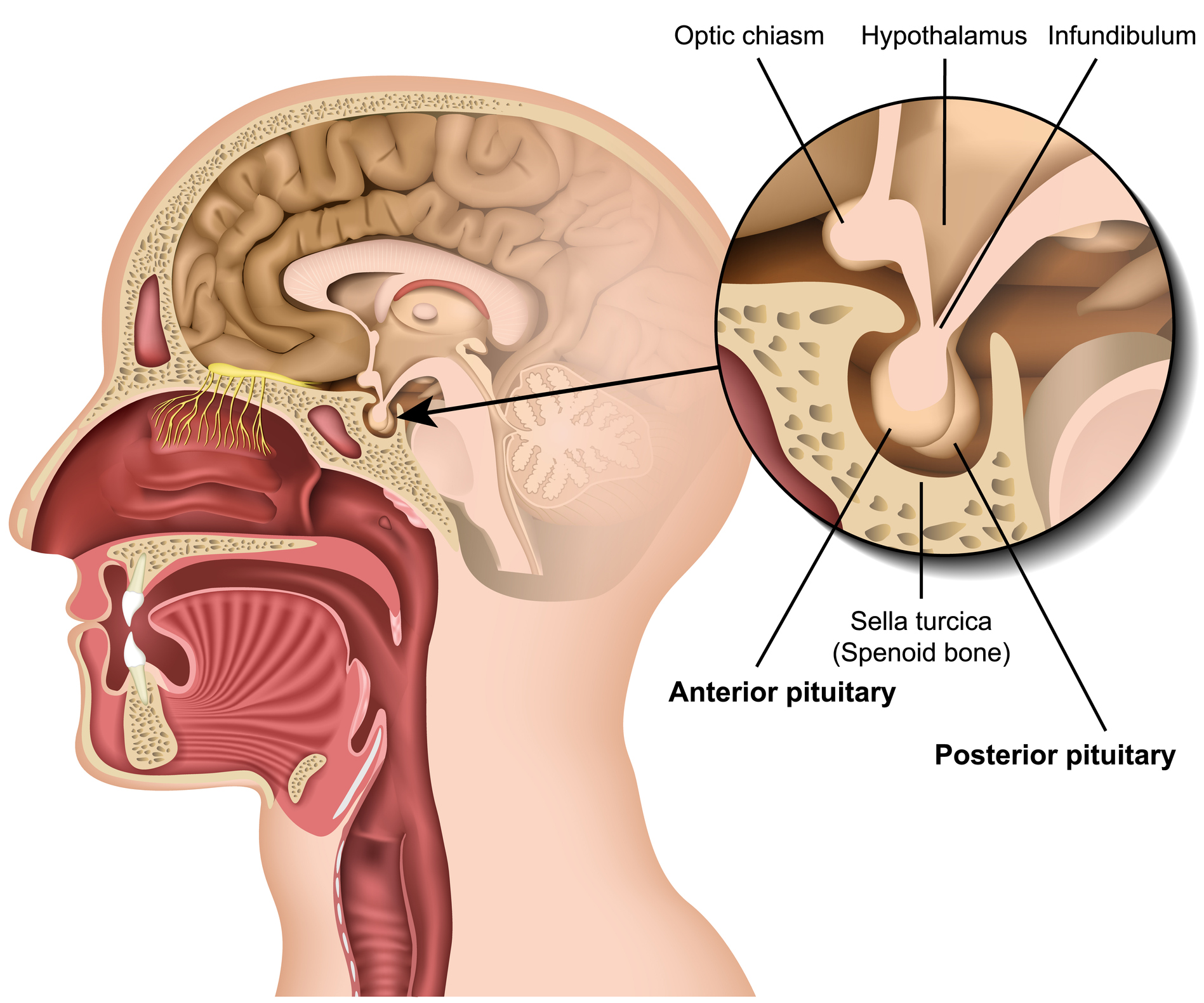
♥︎Anterior lobe secretes trophic hormones.
♥︎Posterior lobe secretes oxytocin and vasopressin (ADH).
-
Which gland secretes thyroxine and tri-iodothyronine? (1)

Thyroid gland
-
What are the secretions of the adrenal gland's cortex and medulla? (2)
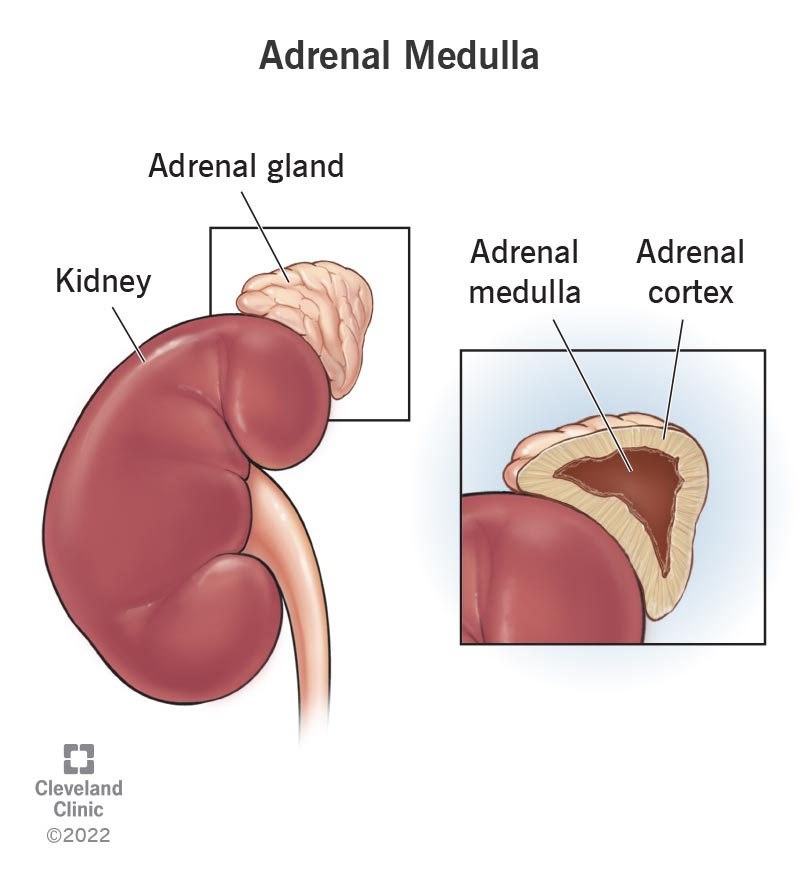
♥︎Cortex secretes cortisol and aldosterone.
♥︎Medulla secretes adrenaline/noradrenaline.
-
Which organs secrete oestrogens, androgens, and progesterones? (1)
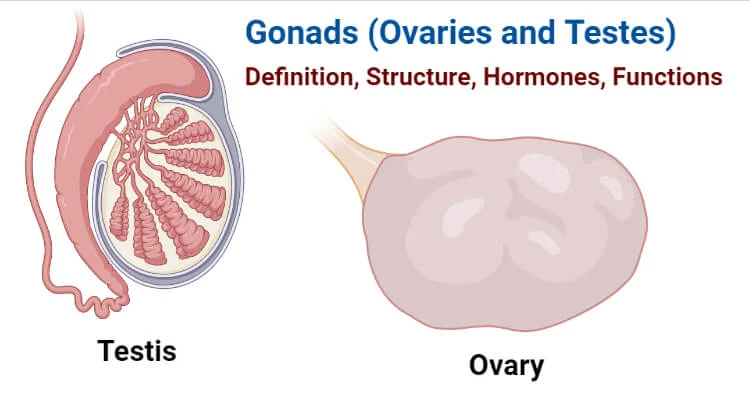
Gonads
-
Which organ secretes insulin and glucagon? (1)
Pancreas
-
Which gland secretes parathyroid hormone? (1)
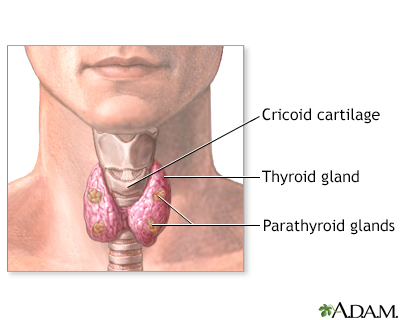
Parathyroid gland
-
Name some secretions from other organs involved in endocrine functions. (5)
♥︎Kidney: Secretes vitamin D and EPO.
♥︎CVS: Secretes ANP and endothelins.
♥︎Pineal gland: Secretes melatonin.
♥︎Thymus gland: Secretes thymic hormones.
♥︎Adipose tissue: Secretes leptin.
-
Picture demonstrating the different types of signalling mechanisms:
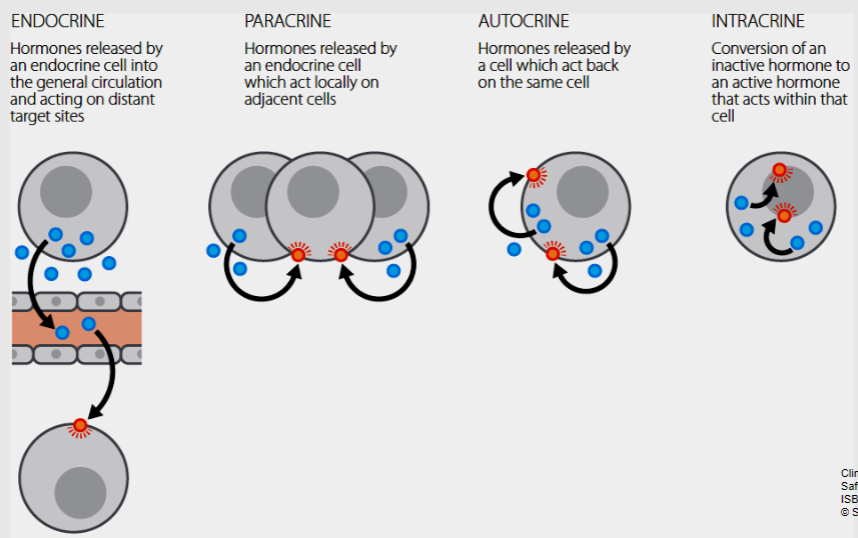
-
What are the general functions of hormones? (1)
Hormones have various roles in the body, including:
♥︎Regulation of reproduction, growth, and development.
♥︎Maintenance of the internal environment.
♥︎Energy production, utilization, and storage.
-
Which hormones are involved in the regulation of reproduction, growth, and development? (4)
♥︎Sex steroids (androgens, oestrogens and progesterone)
♥︎Thyroid hormones
♥︎Prolactin
♥︎Growth hormone
-
Which hormones contribute to the maintenance of the internal environment? (3)
♥︎Aldosterone
♥︎Parathyroid hormone
♥︎Vitamin D
-
Name some hormones involved in energy production, utilization, and storage. (5)
♥︎Insulin
♥︎Glucagon
♥︎Thyroid hormones
♥︎Cortisol
♥︎Growth hormone
-
Picture demonstrating the chemical classification of hormones:
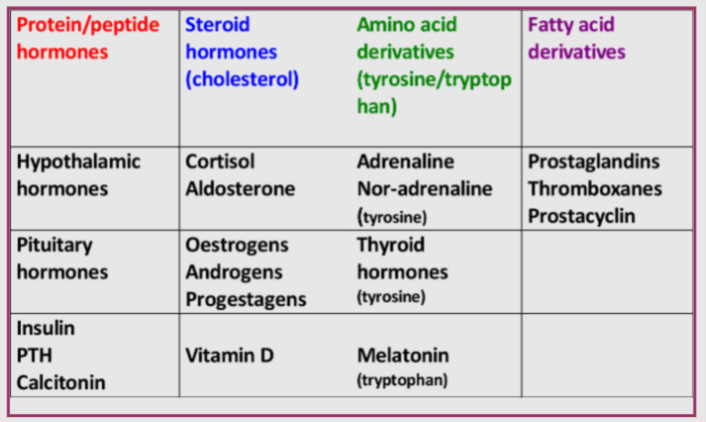
-
Picture demonstrating the chemical nature of hormones:
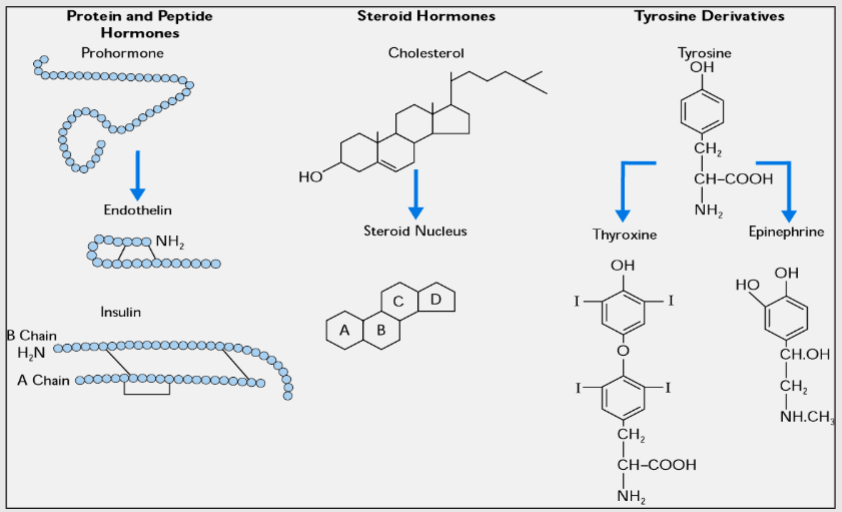
-
Picture demonstrating the Chemical nature of hormones and their transport:
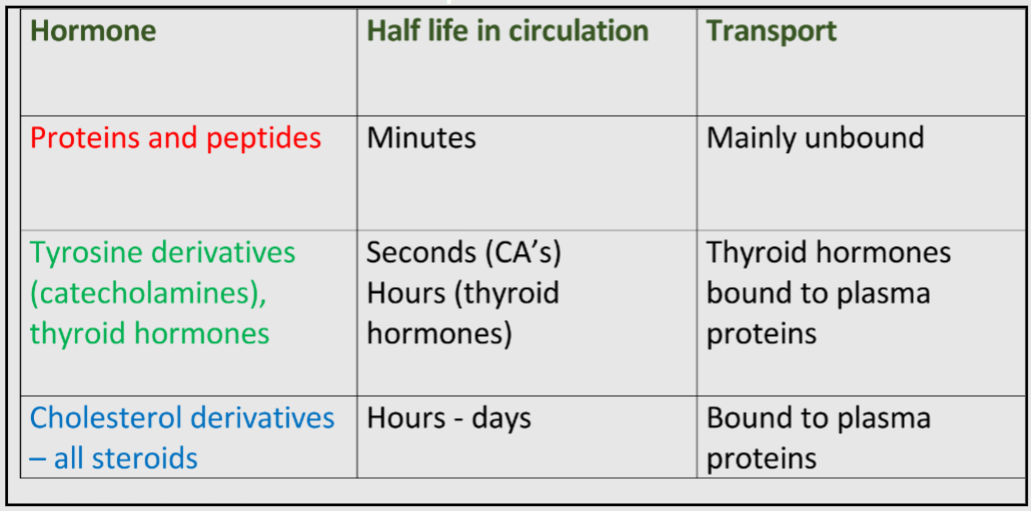
-
Describe the function of parvocellular neurons in the hypothalamic-pituitary axis. (2)
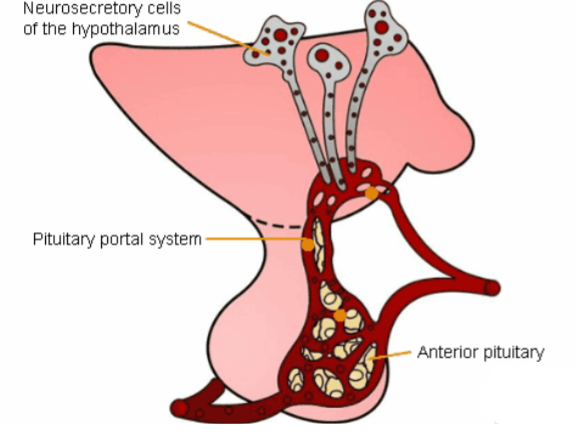
♥︎Parvocellular neurons release hormones to capillaries in the median eminence, which is supplied by the superior hypophysial artery.
♥︎These hormones are then conveyed by portal veins to the anterior pituitary, where they regulate endocrine secretion.
-
What is the role of magnocellular neurons in the hypothalamic-pituitary axis? (1)
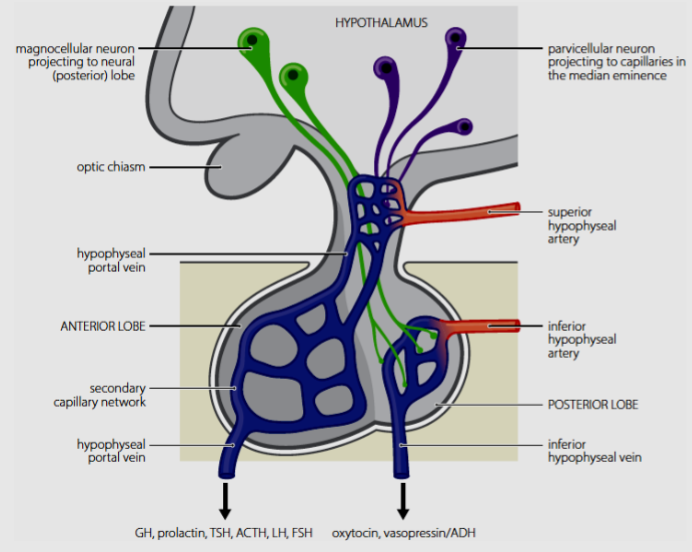
♥︎Magnocellular neurons project to the posterior pituitary and release hormones into capillaries supplied by the inferior hypophysial artery.
-
Picture demonstrating Hypothalamic–pituitary axis and the hormones secreted by the anterior and posterior lobes of the pituitary gland:
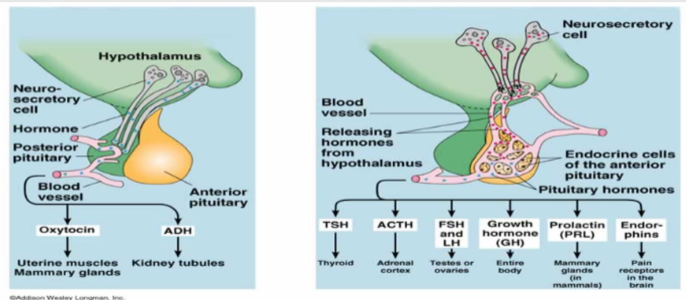
-
What glands are controlled by the hypothalamic-pituitary axis? (5)
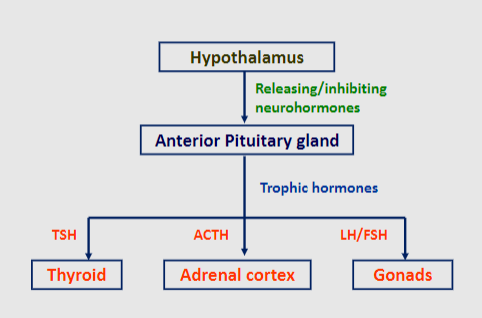
The glands controlled by:
♥︎The hypothalamic-pituitary axis (include the hypothalamus)
♥︎Anterior pituitary gland
♥︎Thyroid
♥︎Adrenal cortex
♥︎Gonads
-
What are the types of hormones released by the hypothalamus and anterior pituitary gland in the hypothalamic-pituitary axis? (2)
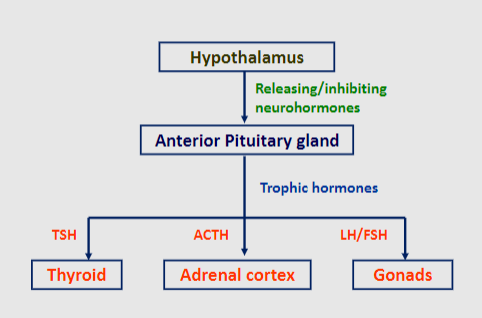
♥︎The hypothalamus releases /inhibits neurohormones
♥︎While the anterior pituitary gland releases ADH and OxyContin
-
Picture demonstrating Hypothalamic control of anterior pituitary secretions:
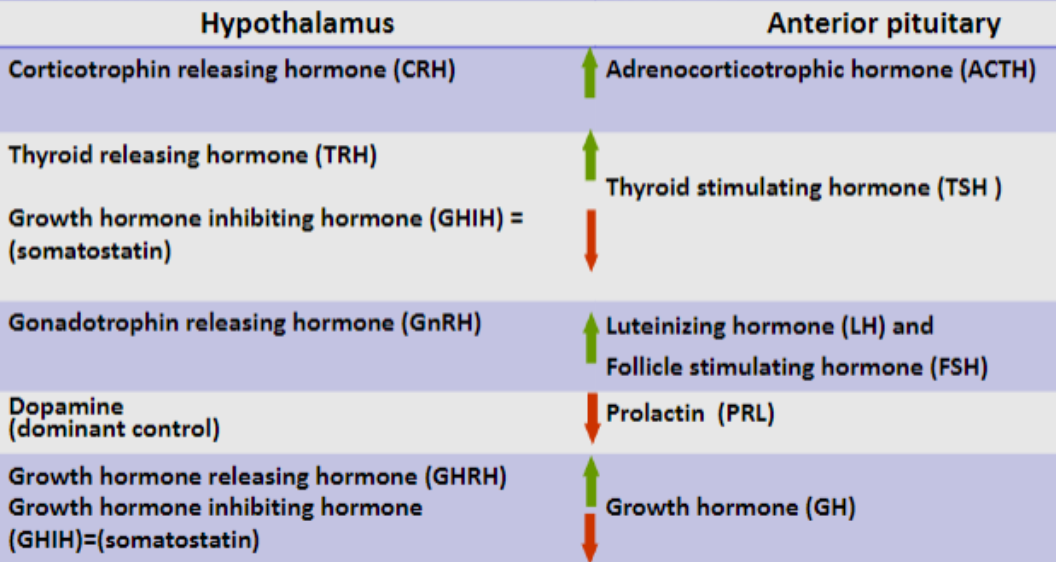
.
-
What disorder is associated with excess growth hormone? (1)
Excess growth hormone is associated with acromegaly
-
What are the common causes of acromegaly? (2)

♥︎Acromegaly is most commonly caused by a pituitary adenoma, leading to an increase in GH-secreting somatotrophs.
♥︎Less commonly, it can be secondary to a tumour elsewhere that secretes GHRH.
-
What is hypothyroidism characterized by? (1)
Hypothyroidism is characterized by a thyroid hormone imbalance.
-
What are the possible causes of hypothyroidism? (1)
Hypothyroidism can occur due to a decrease in thyroid hormone production and/or impaired action of thyroid hormones on target tissues.
-
Picture demonstrating the control of cortisol secretion:
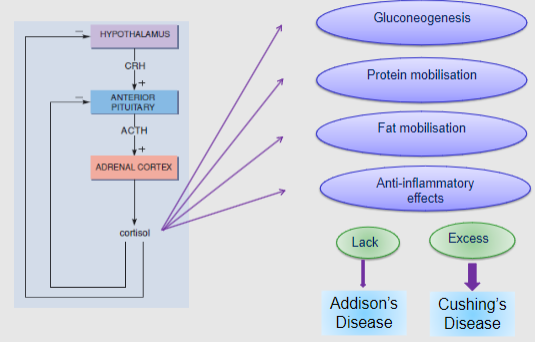
-
Picture demonstrating the disorders of the endocrine system:
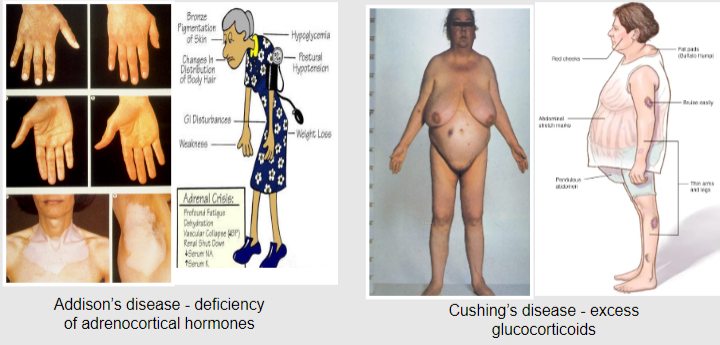
-
Picture demonstrating the disorders of the endocrine system:
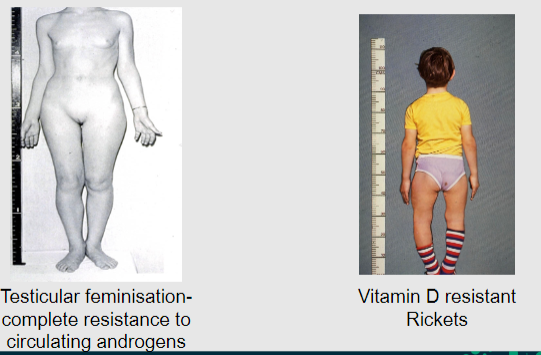
-
What is Addison's disease? (2)
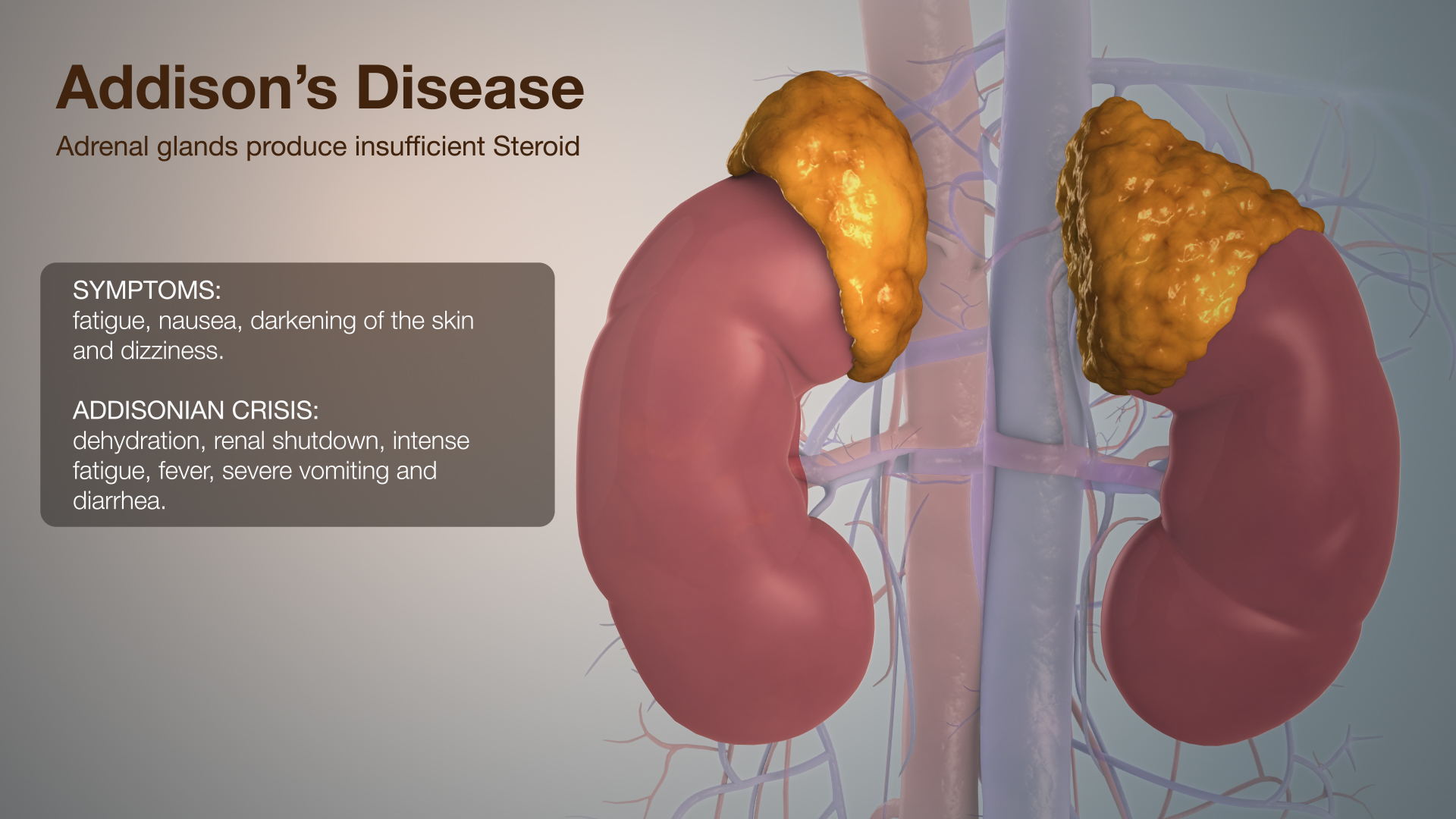
♥︎Addison's disease, also known as primary adrenal insufficiency or hypoadrenalism, is a rare disorder of the adrenal glands.
♥︎The adrenal gland is damaged in Addison's disease, so it does not produce enough cortisol or aldosterone.
-
What is Cushing's syndrome? (1)
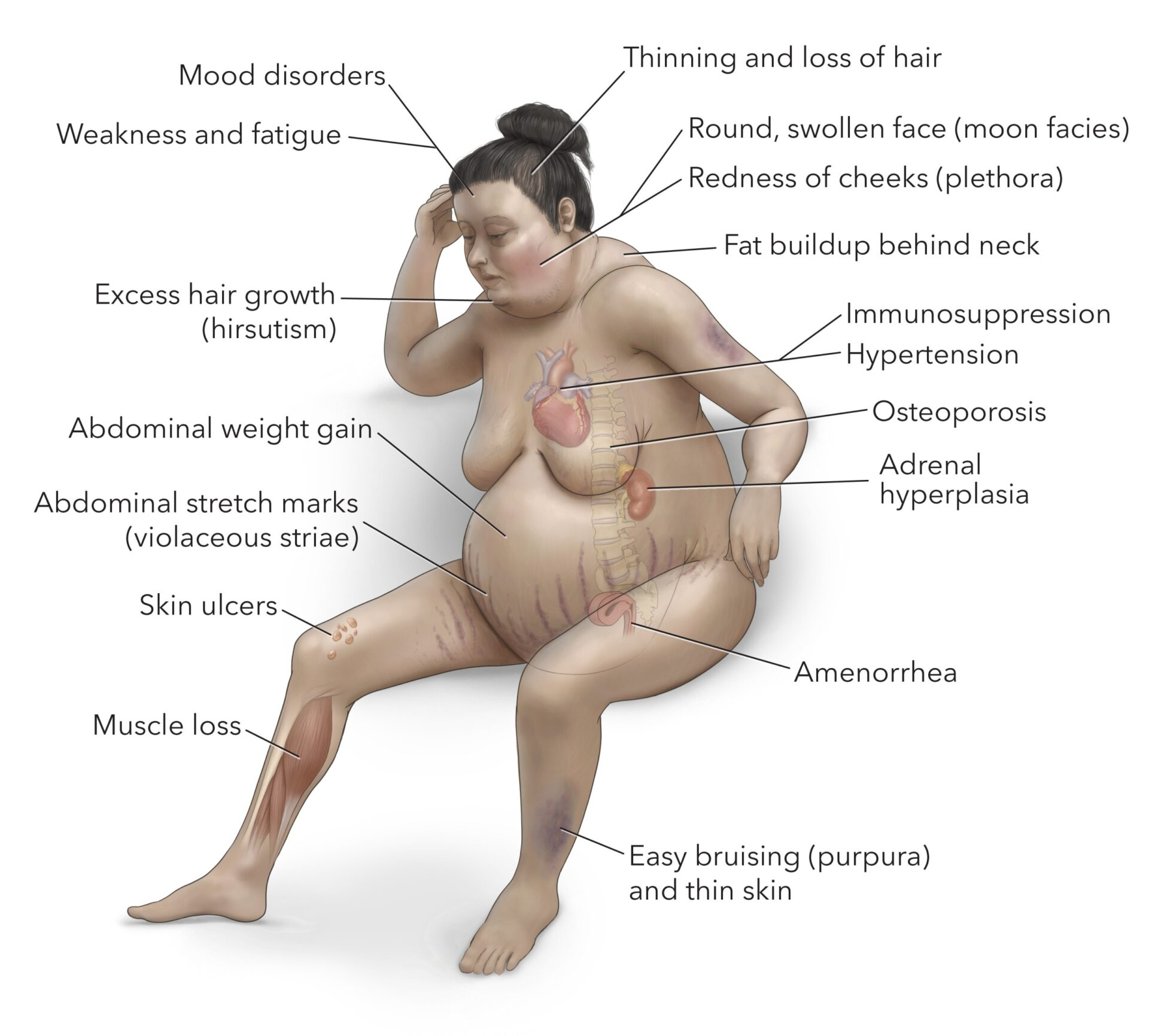
♥︎Cushing's syndrome is a hormonal disorder caused by prolonged exposure to high levels of cortisol hormone in the body.
-
What is vitamin-D resistant rickets? (1)
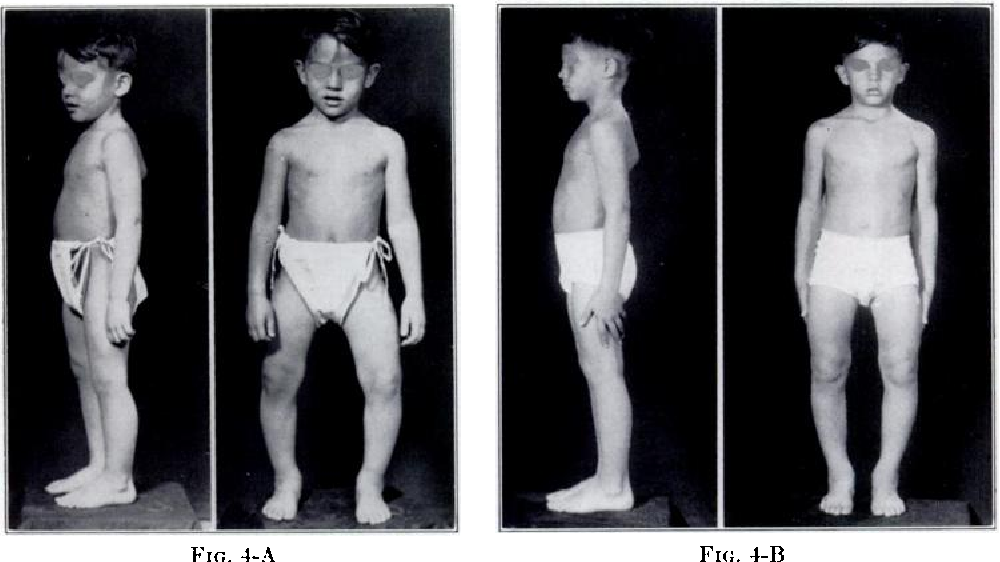
♥︎A group of rare disease characterized by lack of reaction to vitamin D administered in doses sufficient to manage patients with rickets caused by vitamin D deficiency
-
What is testicular feminisation? (1)

♥︎A condition produced in genetically male people by the failure of tissue to respond to male sex hormones, resulting in normal female anatomy but with testes in place of ovaries.

